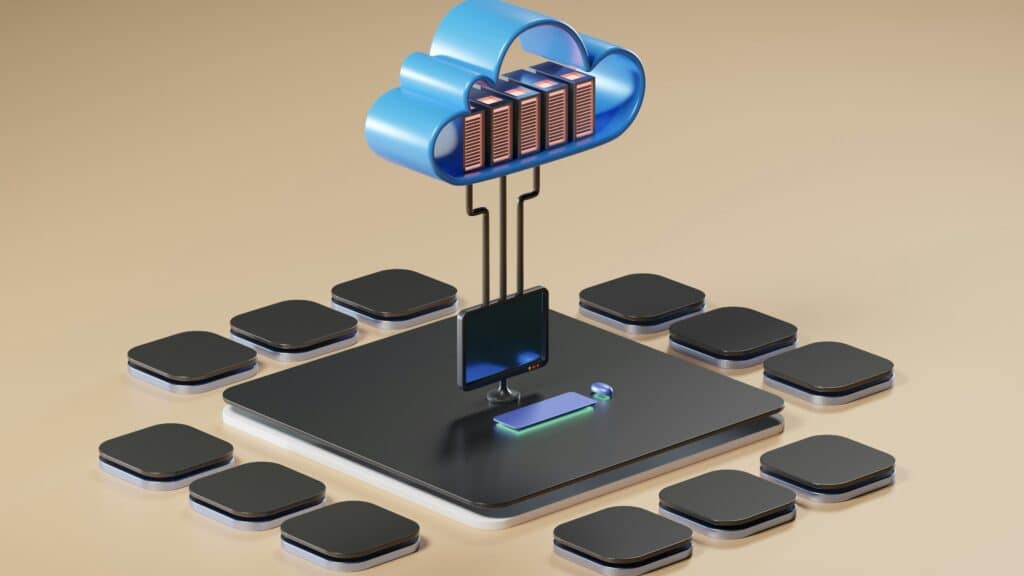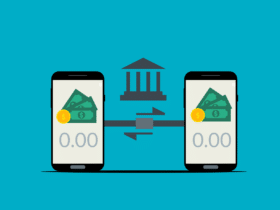Are you aware that by 2025, the cloud will be storing over 100 zettabytes of data? Additionally, the global data storage will be over 200 zettabytes in the same year. This means that the cloud will be storing half of the world’s data.
Yet in 2015, the cloud only held 25% of global data. So, why the change? Why do people prefer the cloud for storage? Is cloud computing cheaper to use? If yes, then what makes it cheaper to use? Read on to discover how cloud computing is more affordable than on-premise data storage.
What Is Cloud Computing?
Cloud computing is the conveyance of various services across the internet. Cloud computing involves emails, data storage, and backups. It also involves data retrieval, analysis, and on-demand software delivery.
The resources range from tools to applications like servers and databases. These resources also include networking, data storage, and software. Moreover, cloud storage allows you to store data remotely. So, you don’t have to store data on a hard drive or local storage. As long as your electronic device accesses the web, you can access your data.
Cloud computing involves remote services in the cloud or a virtual space. It also enables you to access your documents from any device. It can be public or private. Public cloud services include those available over the internet at a fee. In comparison, private cloud services are accessible to a limited number of people on a network.
Furthermore, cloud computing involves a system of networks. Hybrid cloud systems have elements of public and private cloud services.
In addition, it involves app creation and testing and video and audio streaming. Three types of cloud computing exist. One is platform-as-a-service (PaaS). The second one is software-as-a-service (SaaS). Lastly, infrastructure-as-a-service (IaaS) is the third type.
SaaS involves software licenses usage by clients on-demand or as pay-as-you-go services. Microsoft Office 365 is a typical SaaS.
IaaS entails a more comprehensive delivery. Clients can receive IP-based storage, servers, and operating systems through it. Microsoft Azure.2 3 and IBM Cloud are IaaS examples.
PaaS is the most complex Cloud computing. It’s like SaaS, except that it involves software creation and delivery. Heroku and Salesforce.com are examples of PaaS.
Why Is Cloud Computing Cheaper to Use?

Cloud computing serves people from all sectors of the economy. It offers several advantages. This is how cloud computing is cheaper:
It Doesn’t Have Investment Costs
Cloud computing is cheaper compared to other IT infrastructure. It doesn’t need managing and maintenance costs.
The service provider maintains and manages the servers. So, once you’ve paid your subscription fee, you don’t have to incur extra running costs. Besides, you use cloud computing services at a fixed cost. Hence, you don’t incur any upfront costs.
Minimal Hardware Resources
Your cloud service providers help you achieve economies of scale. These providers optimize your hardware needs at the data centers. Besides, switching to cloud-based models from on-premise infrastructure doesn’t require you to acquire any hardware. You share the server infrastructure with other clients.
Yet, your cloud provider comfortably meets your workload and other clients’ needs. The cloud provider estimates each client’s workload. They ensure maximum hardware utilization. The economies of scale imply higher efficiency. They translate to lower management costs to you as the cloud provider.
Energy Efficiency
Cloud computing is highly energy efficient. Optimal server utilization means efficient power consumption. The low energy costs help the cloud provider spend less money on maintenance and management. In the end, you’ll pay less money for the services.
No In-House Managers
Cloud computing does not require you to host a team to fulfill your IT needs. You can access your computing needs without external intervention.
The absence of an in-house team means lots of savings. Compensating IT experts is costly. Having an in-house team would also mean salaries and other benefits. However, with cloud computing, you eliminate expert salaries.
You also eliminate related costs like employee benefits and rent. Moreover, the absence of an in-house manager also conveniences you. You learn to perform everything by yourself. Hence, you don’t have to worry about inefficiencies when critical staff are on leaves.
But, if you already have in-house managers, you can expand your business. Let them work on app development. Apps can increase your cost savings. Apps streamline your CRM, replace paperwork, and improve asset measurement and management.
No Redundancy
Typically, you’d have many IT experts doing related roles most of the time. So, eliminating an in-house team also removes redundancies.
You also eliminate hardware like computers which the experts use in-house IT infrastructure. In-house teams also need emergency hardware in case a computer crashes. The hardware comes with extra costs.
So, doing away with this team also means eliminating associated hardware purchases. It means avoiding repair and maintenance costs.
Cloud computing also eliminates redundancy through data replication. Your cloud service providers rely on many data centers for backup and resilience. They replicate your data and store it elsewhere in case one system fails. Hence, in case of disasters like system crashes, floods, or fire, you’re safe.
Again, in cloud computing, you only pay for the services you use. Additionally, your cloud service provider charges you according to your RAM’s gigabytes. They charge you based on the processing power they expend on you. You pay money resonating with your storage space.
Why Is Cloud Cheaper Than On-Premise?

Cloud computing is cheaper than on-premise in many aspects. Below-explained is how cloud computing is more inexpensive than on-premise.
Cloud Is More Scalable
It’s common to run out of capacity with on-premise IT infrastructure. For instance, you have more visitors than your server can handle during a Black Friday sales drive. As a result, you experience a server overload. Your clients are frustrated. Additionally, you don’t make as many sales as you anticipated.
Moreover, you’ll also need some experts to reboot your server. Again, you’ll spend more money on this service. But cloud computing saves you this hustle. Cloud computing involves pay-as-you-go systems.
Any seasonality and unprecedented growth can’t suspend your operations. Yet, a server overload could force you to purchase a new server. The servers are expensive. And, if the traffic levels decrease, you’d have abundant unused space.
You’d also end up having many expenses of managing several servers. However, not with the cloud! Cloud allows you to adjust your computer power. It allows you to customize your bandwidth and storage at any time. In the end, you’ll only pay for your usage.
Cloud Needs No Upfront Investments
Cloud requires no upfront investment costs like server purchases. Yet, with on-premise, you have to purchase servers to access servers. You’ll also need to replace servers every five years constantly. But cloud saves you these hardware costs. Powering and monitoring your servers on-premise needs time. It needs energy and money. Not to mention, on-premise infrastructure also comes with replacement costs.
In contrast, your cloud service provider bears the running and maintenance costs. So, for the cloud, you pay fixed monthly fees.
Servers and other IT infrastructure are speedily evolving. And to remain competitive, you must timely upgrade. Yet, with the cloud, you don’t worry about these upgrades. Your service provider bears all the accompanying costs.
Cloud Requires No Licensing
On-premise solutions need you to purchase relevant license software upfront. These licenses are pretty expensive.
But with the cloud, the cloud service provider integrates the licensure costs into your monthly subscriptions. This helps you plan your money better. Besides, it’s upon the cloud service provider to calculate everything right. For you, provided you’ve paid your fixed monthly rates, you shouldn’t care about licensing costs.
Cloud Enhances More Cooperation
Cloud enables you to cooperate more. Additionally, more collaboration in the workplace means greater efficiency. It means competitiveness and effectiveness. Since you access everything through the internet with the cloud, you can work remotely.
You and your colleagues can work on the same document from different countries. Again, you can all access documents simultaneously. You can share updates in real-time. Hence, you can break down bulk resulting in increased efficiency.
It’s different with on-premise. Employees have to be physically present to use the computers and servers.
Cloud Offers More Flexibility
Cloud is your ultimate flexible solution. Your employees can work and share everything remotely. As for on-premise, it confines your employees to a physical office. Cloud helps employees enjoy working at their convenience. This also means low running costs.
Cloud Is More Secure
Cloud service providers use many security measures. They use complex digital safeguards. Moreover, they use high-tech physical security systems. As such, they prioritize cybersecurity.
Your cloud service providers protect your data at all costs. But with on-premise, the infrastructure itself is at risk of theft.
And, in case of malicious server manipulation, you may lose your data. Cloud allows you to back up your data. In addition, cloud backups are more secure than on-premise backups. So, you can still retrieve your cloud-based data in case of a cyber-attack.
Is Cloud Computing Always Cheaper?

The cloud is not always cheaper. So, when you’re considering moving to the cloud, it’s wise to ask how cheaper is cloud computing. Some of the aspects that challenge the cost-effectiveness of the cloud include:
Speed
No doubt any reasonable business will prioritize speed. However, the cloud may not always meet your speed needs.
Speed may be an issue if your company has a database. It could be an issue if you have software that needs a specific horsepower amount above average. You may have to supplement your need with on-premise IT solutions when this happens. You may also have to pay a different cloud service provider at times. The extra provider can help you accommodate the additional needs the current one cannot meet. These come with extra costs.
But you can avoid such inconveniences and associated costs. So, choose a cloud service provider who allows you to test their capabilities before migrating. This way, you can be sure the provider you choose can meet all your needs and anticipated adjustments.
Insufficient Knowledge
You may lack the knowledge and skills to use the cloud. If this happens, you may end up paying heavily for it. So, you must know your IT needs. Research the right cloud service provider.
Cloud technologies are also complex. You may need to research about them or have professionals orient you. Any slight ignorance may compromise your entire cloud migration. The training, research, and professional intervention come with costs. Hence, adding to your monthly cloud subscriptions.
Cloud Service Costs May Accumulate
The cloud has everything you could be looking for in an IT infrastructure. Whether it’s AI tools, machine learning tools, or developer tools, the cloud has them. You may not be sure what tools you need to use at times. As a result, you may end up paying extra costs for services you don’t need.
Additionally, the more complex the cloud services you enjoy, the more money you spend. Hence, you must understand what exactly your organization needs from the cloud. Or you can also opt for cloud service providers with tools for managing your monthly spending.
Some service providers offer clients cost management and billing systems freely. These systems help clients optimize their cloud expenses. They can help you maximize cloud potential at as low a cost as possible.
Cloud Outages Cause Downtime
With the cloud, you don’t have much control. You rely on your cloud service provider to maintain everything optimally running.
What happens when the provider lets you down? While it’s rare, it sometimes happens. Downtime may paralyze your business operations. Downtime can result from your cloud service provider experiencing an outage. Outages can be complex, and they may take long before the services become efficient.
As a result, you may make significant losses in just a few hours. This adds to your monthly costs. It makes you uncertain about cheaper cloud computing.
Final Thoughts
Above are the significant reasons exemplifying how cloud computing is cheaper. It’s also more affordable than on-premise IT solutions.
Yet, insufficient research and unpreparedness can make the cloud expensive. So, constantly research well before migrating to the cloud. Test your cloud service providers to ascertain they satisfy your needs.


















